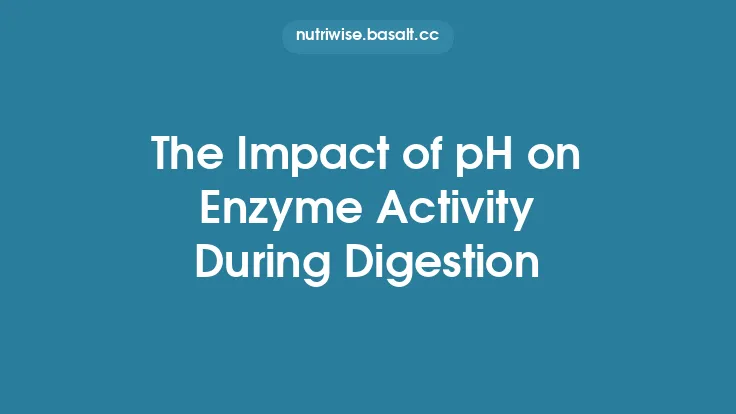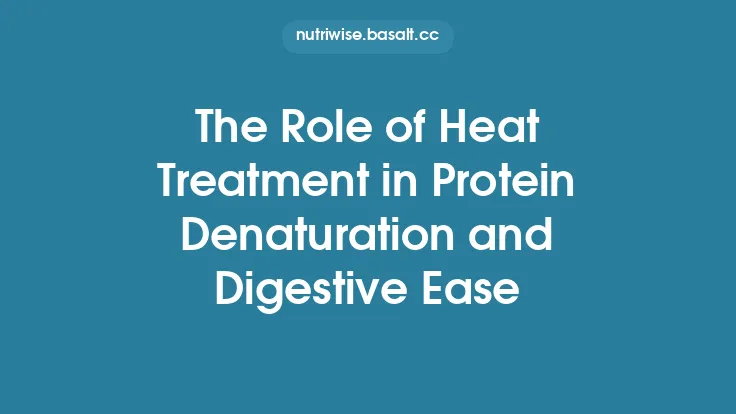Digestive efficiency is the cornerstone that determines how much of the energy stored in the foods we eat actually becomes available to power our bodies. While the caloric content printed on nutrition labels reflects the gross energy of macronutrients, the amount that can be harnessed by cells depends on a cascade of physiological processes that begin the moment food enters the mouth and continue through the small and large intestines. Variations in enzyme activity, gut morphology, microbial fermentation, and the presence of anti‑nutritional factors can all shift the balance between the theoretical energy of a food and the metabolizable energy that fuels metabolism. Understanding these nuances is essential for anyone seeking to interpret dietary energy values accurately, design nutrition plans for health or performance, or manage conditions that impair nutrient absorption.
Understanding Digestive Efficiency
Digestive efficiency refers to the proportion of ingested macronutrient mass that is broken down, absorbed, and ultimately utilized for metabolic processes. It is commonly expressed as a percentage:
\[
\text{Digestive Efficiency (\%)} = \frac{\text{Metabolizable Energy (kcal)}}{\text{Gross Energy (kcal)}} \times 100
\]
- Gross Energy is measured by bomb calorimetry and represents the total heat released when a food sample is completely combusted.
- Metabolizable Energy accounts for losses in feces, urine, and, for some nutrients, gaseous products of fermentation. It is the energy that can be oxidized by the body.
The difference between these two values is not merely academic; it translates into real‑world differences in weight management, athletic performance, and clinical outcomes. For example, two diets with identical gross caloric values may diverge substantially in their net energy contribution if one contains a higher proportion of poorly digestible fibers or anti‑nutrients that impede enzyme action.
Macronutrient‑Specific Digestion and Absorption
Although all macronutrients ultimately provide energy, the pathways and efficiencies of their digestion differ markedly.
| Macronutrient | Primary Digestive Enzymes | Site of Major Absorption | Typical Digestive Efficiency* |
|---|---|---|---|
| Carbohydrates (starches, sugars) | Salivary α‑amylase, pancreatic α‑amylase, brush‑border maltase, sucrase, lactase | Small intestine (duodenum & jejunum) | 95–99 % for simple sugars; 80–95 % for complex starches (lower if resistant starch is present) |
| Proteins | Pepsin (stomach), pancreatic trypsin, chymotrypsin, carboxypeptidases; brush‑border peptidases | Small intestine (jejunum) | 85–95 % (reduced in pancreatic insufficiency, celiac disease) |
| Fats (triglycerides) | Lingual and gastric lipases (minor), pancreatic lipase with colipase, bile‑salt emulsification | Small intestine (primarily ileum) | 90–98 % for long‑chain triglycerides; lower for medium‑chain triglycerides when malabsorption is present |
\*Values represent averages from healthy adult populations under typical dietary conditions.
Carbohydrates: Simple sugars (glucose, fructose, galactose) are absorbed almost completely via active transport (SGLT1) or facilitated diffusion (GLUT5). Complex carbohydrates must be hydrolyzed to monosaccharides; the presence of resistant starch or certain oligosaccharides (e.g., raffinose) can escape enzymatic breakdown, reaching the colon where they become substrates for microbial fermentation.
Proteins: Protein digestion begins in the acidic gastric environment, where pepsin cleaves peptide bonds. The resulting polypeptides are further hydrolyzed in the duodenum. Absorption occurs as free amino acids and small peptides via Na⁺‑dependent transporters. Inefficient proteolysis leads to increased nitrogen loss in feces and urine, diminishing net energy.
Fats: Lipid digestion is heavily dependent on bile salts for emulsification, which increases the surface area for pancreatic lipase. The resulting monoglycerides and free fatty acids form micelles that are taken up by enterocytes. Impaired bile production (e.g., after cholecystectomy) or pancreatic enzyme deficiency can dramatically lower fat digestibility, leading to steatorrhea and a substantial drop in metabolizable energy.
Factors Modulating Digestive Efficiency
1. Food Matrix and Processing
The physical structure of food influences enzyme accessibility. Whole grains, legumes, and nuts possess intact cell walls that protect starches and proteins from rapid enzymatic attack. Mechanical processing (grinding, milling, cooking) disrupts these barriers, increasing surface area and often raising digestibility. However, over‑processing can generate resistant starches (retrograded amylose) that become less digestible but more fermentable in the colon, shifting energy contribution from direct absorption to short‑chain fatty acid (SCFA) production.
2. Anti‑Nutritional Compounds
Phytates, tannins, and certain protease inhibitors bind minerals and macronutrients, reducing enzyme activity. For instance, phytate chelates calcium and magnesium, indirectly impairing the activity of pancreatic lipase, while trypsin inhibitors in raw soybeans can lower protein digestibility by up to 30 % until heat‑treated.
3. Gut Microbiota
Approximately 5–15 % of dietary energy in Western diets originates from microbial fermentation of indigestible carbohydrates. The colonic microbiota converts resistant starch, non‑starch polysaccharides, and oligosaccharides into SCFAs (acetate, propionate, butyrate). These SCFAs are absorbed and can contribute up to 10 % of total daily caloric intake, depending on fiber type and microbial composition. Dysbiosis—an imbalance in microbial populations—can therefore alter the net energy derived from the same food.
4. Physiological and Pathological States
- Age: Gastric acid secretion declines with age, reducing pepsin activation and protein denaturation, which can lower protein digestibility.
- Pancreatic Insufficiency: Chronic pancreatitis or cystic fibrosis diminishes secretion of lipases, amylases, and proteases, leading to malabsorption of fats (up to 50 % loss) and proteins.
- Intestinal Disorders: Celiac disease, Crohn’s disease, and short bowel syndrome reduce absorptive surface area, directly decreasing the efficiency of all macronutrients.
- Medications: Proton‑pump inhibitors raise gastric pH, impairing protein denaturation; orlistat inhibits pancreatic lipase, purposefully reducing fat absorption.
5. Hormonal and Neural Regulation
While the article avoids deep discussion of hormonal control of metabolism, it is worth noting that secretin, cholecystokinin (CCK), and gastric inhibitory peptide (GIP) modulate enzyme secretion and gallbladder contraction, indirectly influencing how much of the ingested macronutrient load can be processed.
Quantifying Energy Availability: From Gross to Metabolizable Energy
The transition from gross to metabolizable energy involves several correction factors:
- Fecal Energy Loss (FEL): Measured by bomb calorimetry of fecal samples. For carbohydrates, FEL is typically 2–5 % of gross energy; for proteins, 5–10 % (due to nitrogen excretion); for fats, 1–3 % in healthy individuals but can exceed 20 % in malabsorption.
- Urinary Energy Loss (UEL): Primarily nitrogen from deaminated amino acids. The Atwater factor for protein (4 kcal g⁻¹) already incorporates an average UEL of ~1 kcal g⁻¹.
- Gaseous Losses (GL): Fermentation gases (CO₂, CH₄) represent a minor energy loss (<1 %) but are more relevant in high‑fiber diets.
- Metabolic Water Production: The oxidation of macronutrients yields water, which carries a small amount of enthalpy; this is accounted for in the Atwater system.
The classic Atwater system (4 kcal g⁻¹ for carbs and protein, 9 kcal g⁻¹ for fat) provides average metabolizable values derived from extensive feeding studies. However, modern research shows that these values can deviate by ±10 % depending on the specific food matrix and individual digestive capacity. Consequently, nutritionists sometimes employ modified Atwater factors (e.g., 3.75 kcal g⁻¹ for protein in high‑fiber foods) or direct calorimetric measurements for specialized populations.
Clinical and Practical Implications
1. Dietary Planning for Weight Management
When designing calorie‑restricted diets, accounting for reduced digestibility of high‑fiber or high‑phytate foods can prevent overestimation of net energy intake. For example, a 100‑g serving of whole‑grain barley may have a gross energy of 350 kcal, but its metabolizable energy could be ~300 kcal due to fiber and resistant starch.
2. Optimizing Athletic Performance
Athletes with high energy demands benefit from foods with maximal digestibility to ensure rapid availability of glucose and fatty acids. Strategies include consuming low‑fiber, low‑phytate carbohydrate sources (e.g., white rice, potatoes) pre‑exercise, and ensuring adequate bile flow and pancreatic enzyme activity through proper hydration and, if needed, enzyme supplementation.
3. Managing Malabsorption Syndromes
Patients with pancreatic insufficiency often receive pancrelipase (a mixture of lipase, amylase, and protease) to restore digestive efficiency. Monitoring fecal fat excretion (72‑hour stool collection) helps titrate enzyme doses. Similarly, individuals with celiac disease must adhere to a strict gluten‑free diet to allow intestinal mucosa recovery, thereby improving nutrient absorption.
4. Nutrient Timing and Food Pairing
Combining foods that enhance each other’s digestibility can improve net energy. For instance, adding a modest amount of healthy fat (olive oil) to a high‑fiber meal can stimulate bile secretion, aiding the emulsification of fat‑soluble vitamins and potentially improving overall macronutrient absorption.
5. Public Health Nutrition
Understanding that not all calories are equal in terms of availability informs policy decisions regarding food labeling. Some jurisdictions now require “available energy” values on packaged foods, reflecting metabolizable energy rather than gross caloric content, to give consumers a more realistic picture of energy intake.
Future Directions and Research Gaps
- Personalized Digestive Profiling: Advances in non‑invasive breath tests (hydrogen, methane) and stool metabolomics could enable individualized estimates of carbohydrate fermentability and SCFA production, refining energy availability calculations.
- Microbiome‑Targeted Interventions: Probiotic or prebiotic strategies aimed at increasing the proportion of SCFA‑producing bacteria may augment the energy derived from otherwise indigestible fibers, a potential tool for populations with limited caloric intake.
- Dynamic Atwater Factors: Development of algorithms that adjust Atwater coefficients in real time based on meal composition, gut health metrics, and enzyme supplementation status could improve dietary planning accuracy.
- Impact of Emerging Food Technologies: Novel processing methods such as high‑pressure cooking, extrusion, and pulsed electric fields alter food microstructure. Systematic studies are needed to quantify how these technologies affect digestive efficiency across macronutrients.
In sum, digestive efficiency acts as the gatekeeper between the chemical energy stored in food and the usable energy that fuels every cellular process. By appreciating the macronutrient‑specific pathways, the myriad factors that modulate enzyme action and absorption, and the methods used to quantify metabolizable energy, we gain a clearer, more realistic view of dietary energy. This perspective not only sharpens nutritional counseling and clinical management but also guides future research toward more precise, individualized approaches to nutrition.





